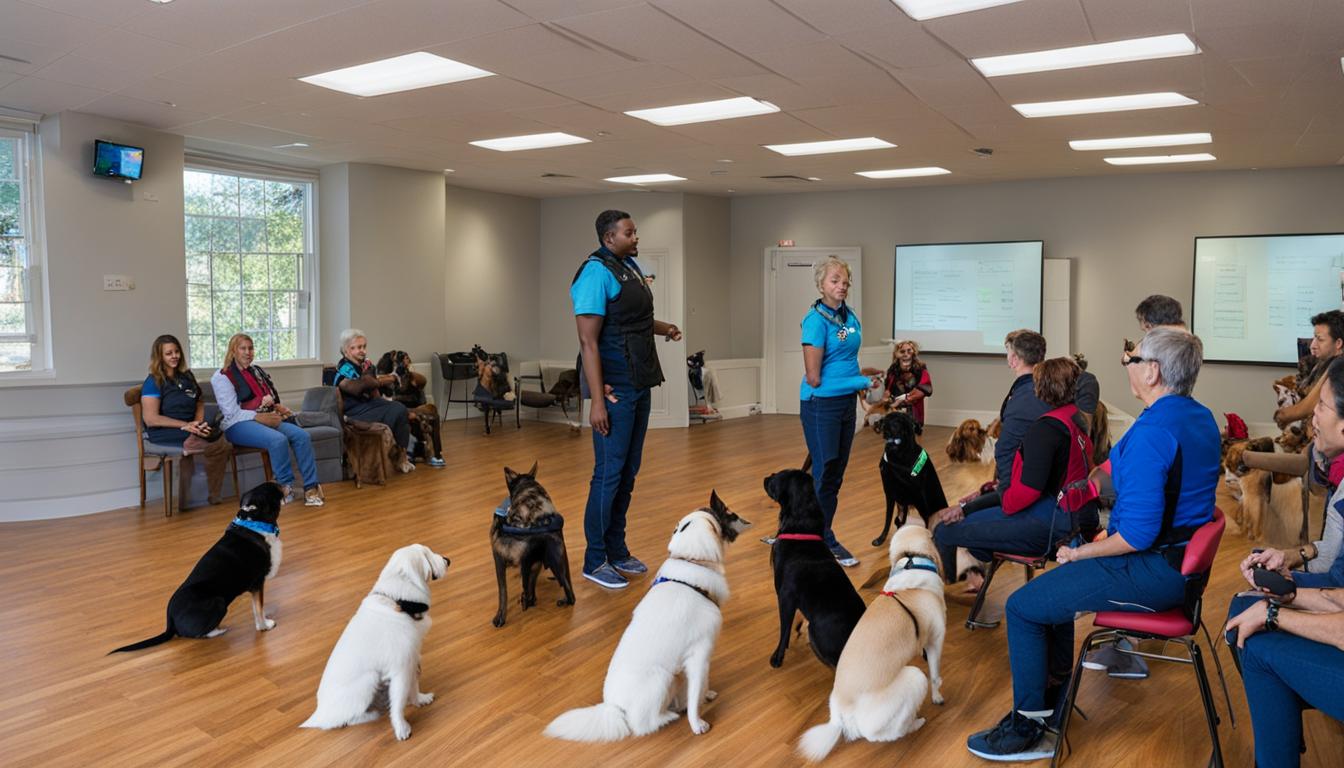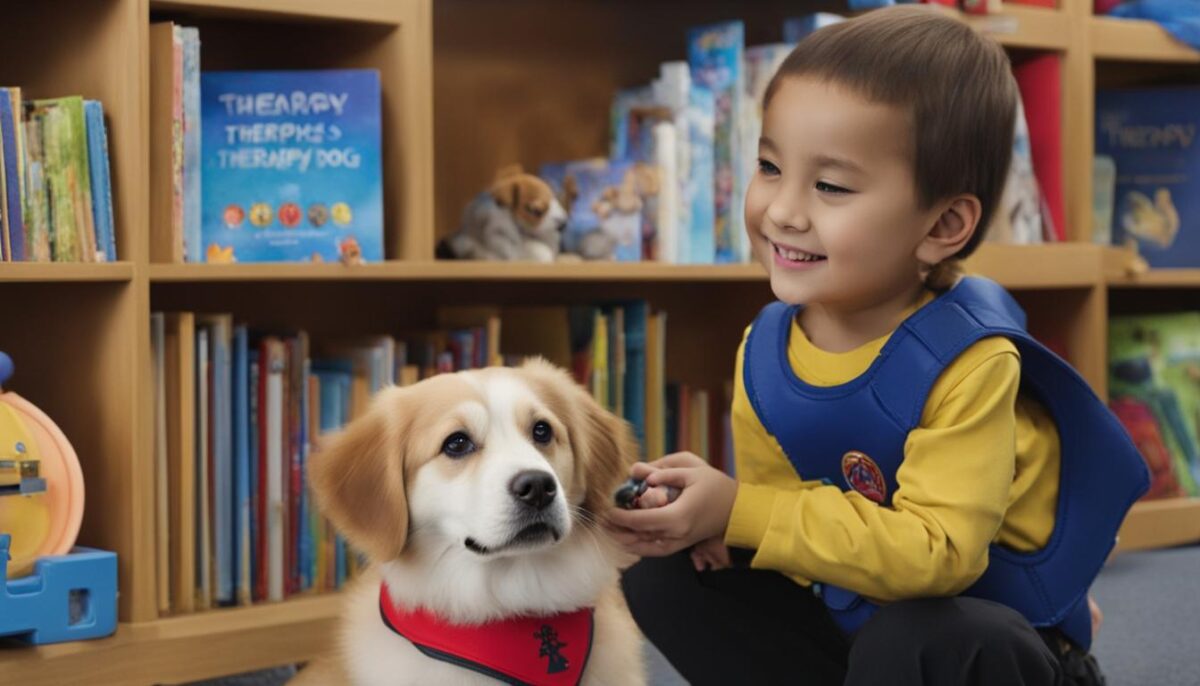Have you ever watched a therapy dog at work and wondered how they became so good at helping others? A therapy dog brings joy and comfort to people in schools, hospitals, and nursing homes. But they are not the same as a service dog or an emotional support animal. Therapy dog training is special. It starts with basic steps and grows into something beautiful—a happy dog spreading love. If you and your furry friend want to help and make people smile, learn how to train your buddy into an amazing therapy dog. The benefits of a therapy dog are big—they make everybody feel better, even you!
Key Takeaways
- Learn the difference between a therapy animal, a service dog, and an emotional support animal.
- Start with simple training, like the Canine Good Citizen course.
- Your pet can bring joy to many people as a therapy dog.
- Therapy dogs help in places like schools and hospitals.
- Being a therapy dog team is a great way for you and your dog to help your community.
The Foundations of Therapy Dog Training
Getting your dog ready to be a therapy dog is like building a house. First, you need a strong foundation. For a therapy dog, this foundation includes having a good heart and being well-behaved. Your furry friend should be kind, feel strong and happy, stay calm, and not be too loud. They should also feel okay when meeting new people or going to new places.
To make sure your dog can be the best helper, they need to be healthy. This means they must have all their health and vaccination records up-to-date. A healthy pup is a happy helper! Plus, they need to know how to listen and follow commands—like ‘sit’, ‘stay’, or ‘come’—by using positive reinforcement training. It’s like when you get a gold star for a job well done!
| Qualification | Why It’s Important |
|---|---|
| AKC Canine Good Citizen | It’s like graduating from school for dogs. They learn to be super good. |
| Therapy Dog Temperament | A dog who is calm and friendly can make people feel better fast. |
| Health and Vaccination | Just like you, your dog needs to stay healthy to help others. |
| Positive Reinforcement Training | Your dog learns by getting treats or hugs, so they want to be good! |
If your dog does all of this great stuff, they might be ready to help people to feel better when they’re sick or sad. Remember, helping others is what a therapy dog does best. And you can help your dog be that wonderful friend to someone who needs a smile.
How to Train a Therapy Dog: Building Skills and Behaviors
Training your dog to be a therapy dog is like teaching them how to be a superhero friend. Just like superheroes, therapy dogs need special skills to help and bring smiles to people. With the right training techniques and lots of love, your pup can learn amazing therapy dog skills.
The Importance of Positive Reinforcement in Training
When you train your dog, think about how you can make it fun! If they do something good, like following obedience commands, give them treats or belly rubs. This helps them know they’ve done something right and they should do it again. Positive reinforcement is a happy way to say “Good job!” to your furry friend.
The Training Journey: From Obedience to Therapy Skills
Start with simple stuff like ‘sit’, ‘stay’, and ‘down’. As your dog gets better at these, you can try more exciting things. Therapy dogs also need to feel comfy with different people and places, so socialization is very important. They should be gentle and know how to behave well in new situations. The bigger the heart, the better the therapy dog!
- Basic ‘Sit’ and ‘Stay’ Commands
- Being Friendly in New Places
- Listening to ‘Down’ and ‘Come’ Commands
- Bringing Happiness to People
To become an official therapy dog, you also need a special thing called therapy dog certification. This means they pass a test to show they are ready to be a super-duper therapy dog.
| Skills to Practice | Ways to Make it Fun | Why It’s Important |
|---|---|---|
| Obedience Commands | Treats and Games | Listens Well During Visits |
| Socializing with People | Play Dates | Makes Friends Easily |
| Visiting New Places | Adventures and Walks | Fearless Helper |
Conclusion
Having your dog trained to be a therapy dog brings so much good. You and your dog get closer, and together, you help make other people smile and feel better. When therapy dogs visit, they bring cheer and make everyone’s hearts warm. They can even help people feel less worried and lower how fast hearts beat. This is because therapy dogs have a special impact—they create happy feelings that help both our bodies and our minds.
Benefits of Having a Well-Trained Therapy Dog
When your dog knows how to be a great therapy dog, it makes a big difference. Not only do you get to enjoy the love of your buddy, but others do too. People who get to spend time with your dog can start to feel the emotional benefits, such as being more joyful and relaxed. Plus, being around a calm and loving dog can also help their physical health. Good feelings like this come from the body making happy chemicals when around a friendly pup like yours.
Next Steps After Training: Certification and Opportunities
Once your dog learns all they need to know, the next step is for them to become a certified therapy dog. This means they have proven they are good at making folks feel better. With this certification, the two of you can hunt for places to volunteer. There are many people waiting for a visit from a kind therapy dog. Schools, hospitals, and even someone’s house can be places you and your dog bring joy. So, with your trained and certified furry friend, get ready to spread happiness wherever you are needed.
FAQ
What is the difference between a therapy dog, an emotional support animal, and a service dog?
A service dog is specially trained to perform tasks for an individual with a disability, an emotional support animal provides companionship to support mental health conditions, and a therapy dog is trained to provide comfort to various people in public settings like hospitals and schools.
What qualifications does my dog need to become a therapy dog?
Your dog needs to exhibit a friendly, confident, and calm demeanor, be disciplined, and respond well to basic commands. Health and vaccination requirements must also be met, including completion of courses such as the AKC Canine Good Citizen for basic obedience.
Why is positive reinforcement important in therapy dog training?
Positive reinforcement is a training technique that encourages your dog to repeat good behaviors by rewarding them. It is essential for creating a positive learning environment and for effectively teaching your dog the behaviors needed for therapy work.
What are the key obedience commands my dog should know for therapy dog training?
Key obedience commands include ‘sit’, ‘stay’, ‘down’, ‘leave it’, and ‘visit’. These basic commands form the foundation for therapy dog training and help your dog navigate various environments safely and politely.
How do I get my dog certified as a therapy dog?
After your dog has been properly trained and exhibits the necessary skills and behaviors, you can pursue certification by passing specific tests conducted by reputable organizations dedicated to certifying therapy dogs.
What are the benefits of having a well-trained therapy dog?
A well-trained therapy dog can reduce anxiety, lower blood pressure, and boost feelings of well-being among those they meet. This enriches the bond between you and your dog, and provides valuable service to your community by spreading joy and comfort.
What opportunities are available for my certified therapy dog and me?
There are numerous volunteer opportunities available for certified therapy dog teams, including visits to nursing homes, schools, hospitals, and other facilities, as well as personalized interaction with individuals in need of comfort and support.
How can my emotional support animal become a therapy dog?
If your emotional support animal (ESA) has the right temperament and you think they could provide joy and comfort to others, they can undergo additional training to become a therapy dog, preparing them for therapy work in public settings.
What does Animal Assisted Therapy (AAT) and Animal Assisted Activities Therapy (AAA) involve?
AAT and AAA involve specific forms of therapy work where an animal is an integral part of the treatment process. AAT is more structured and goal-oriented, whereas AAA provides opportunities for motivational, educational, and recreational benefits to enhance quality of life.

